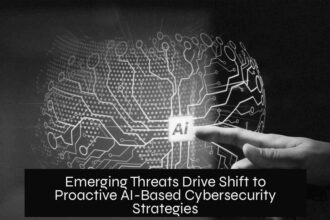Table of Contents
ToggleTrump Administration Cuts ‘Safety’ from AI Safety Institute
The Trump administration replaces the U.S. AI Safety Institute with the Center for AI Standards and Innovation (CAISI), shifting its focus from AI safety to innovation and national security concerns.
Renaming and Mission Change
The Biden-era U.S. AI Safety Institute, established in November 2023, no longer exists under its original mandate. Commerce Secretary Howard Lutnick announces the rebranding to CAISI. This change removes the explicit “safety” focus, emphasizing innovation and security instead.
This aligns with the Trump administration’s stance. Officials believe that too much oversight on AI technology may hinder U.S. competitiveness globally.
Focus on Innovation and Security
- CAISI aims to promote rapid commercial AI innovation.
- The center evaluates potential security risks, such as vulnerabilities and hostile foreign interference involving AI systems from adversaries.
- It specifically looks for covert malicious behavior like software backdoors.
- CAISI also aims to protect U.S. technology from burdensome foreign regulations.
Pro-Innovation and Deregulation Approach
The transformation reflects a broader Trump administration policy to lighten AI regulations. In his first week, President Trump signed an executive order to remove AI policies considered to block American innovation. Biden’s safety and privacy-focused AI executive order has been removed from official White House resources.
Concerns on International Competition and Security
National security remains a priority. The emergence of the Chinese AI app DeepSeek, viewed as a threat due to its advanced capabilities, underscores these concerns. President Trump called it a “wake-up call” for American AI firms facing global competitors.
Personnel and Direction Shift
The original staff of the U.S. AI Safety Institute has seen changes. None attended the February AI summit in Paris with Vice President JD Vance. Elizabeth Kelly, the institute’s first director, stepped down that same month.
Key Takeaways
- The Trump administration replaces the AI Safety Institute with a center focused on AI standards, innovation, and security.
- Explicit focus on AI safety is removed in favor of accelerating AI development and guarding against national security threats.
- The shift aligns with a deregulatory, pro-innovation agenda on AI technology.
- International competition, especially from China, influences U.S. AI policy direction.
- Leadership and staffing changes accompany the institute’s reformation.
Trump Administration Cuts ‘Safety’ from AI Safety Institute: A Closer Look at the Shift
The Trump administration has revamped the Biden-era AI Safety Institute by removing “safety” from its name and refocusing its mission, emphasizing innovation and security over safety protocols. This change marks a significant shift in how the federal government approaches artificial intelligence oversight. But what does this really mean for AI development in the U.S. and global competition?
Let’s unwrap this story by diving into the details.
Back in November 2023, the Biden administration launched what it called the U.S. AI Safety Institute. Its core mission? To oversee and regulate the rapidly growing, and often unpredictable, world of commercial AI technologies with an eye firmly on safety and privacy.
Fast forward to 2024, and the Trump administration is rewriting the playbook. Howard Lutnick, the Commerce Secretary, announced that the institute is now the Center for AI Standards and Innovation (CAISI). The key word dropped here? “Safety.”
This renaming isn’t just cosmetic. It signals a pivot away from strict safety measures towards fostering innovation—and protecting national security. Lutnick’s announcement highlights a commitment to cutting “censorship and regulations used under the guise of national security.” In other words, the new goal is to fuel AI growth without regulatory handcuffs that, in their view, slow down American innovation.
Innovation vs. Safety: Where Does the Balance Lie?
So, how is CAISI different?
First, it shifts the focus from “safety” to “standards and innovation.” This change is aligned with a broader Trump administration belief that heavy regulation could blunt the United States’ AI edge globally. Instead of focusing primarily on the risks AI poses, the center aims to enable faster technological advances, while still keeping an eye on certain security threats.
The new center will actively evaluate “potential security vulnerabilities and malign foreign influence” linked to adversarial AI technology. This includes concerns about “backdoors” or covert malicious behavior, especially from foreign actors. Interestingly, this approach reveals a subtle distinction: while the institute steps back from regulating AI to prevent local mishaps, it ramps up vigilance against international threats.
This reflects worries about global competition, especially with China’s growing AI influence. Take the example of the Chinese app DeepSeek. Released recently, its advanced AI capabilities triggered alarm bells over national security. Trump himself called DeepSeek a “wake-up call” that highlights the fierce tech race the U.S. faces.
Is This a Safe Bet for the Future?
Here’s the rub: by dropping safety from the institute’s core mission, critics worry the U.S. may let down its guard on AI risks that could affect users domestically.
But proponents argue that reducing red tape will unleash a wave of innovation that positions America at the forefront of AI technology. Trump signed an executive order during his first week back in office that zeroed out previous Biden AI policies. These earlier directives focused heavily on safety and privacy. The new order removes those “barriers” to American AI breakthroughs.
It’s worth noting the tone has moved sharply from caution to growth, reflecting a broader “pro-innovation” deregulatory stance. But what about the people who made the original safety push happen?
Elizabeth Kelly, who directed the original AI Safety Institute, resigned in February 2024. And the U.S. AI Safety Institute staff notably skipped that month’s AI summit in Paris alongside Vice President JD Vance. These moves suggest a substantial change in both personnel and priorities.
What Can We Learn From This Shift?
This transformation offers a revealing look into the current administration’s priorities. Here are a few takeaways:
- National Security Takes Center Stage: Rather than broad safety concerns, the focus narrows to keeping adversarial foreign AI systems at bay.
- Innovation Is the Watchword: The Trump administration prioritizes speed and flexibility in AI development over stringent safety regulations.
- Deregulation as a Strategy: Scrapping Biden-era policies signals a belief that less government interference will better position the U.S. in the AI race.
But does tossing out the word “safety” mean we’re gambling with AI’s risks? That’s the million-dollar question.
The rapid growth of AI demands measures that protect users and society, yet overly tight controls might stifle progress and competitiveness. Finding the right balance is crucial.
So, Should We Worry or Celebrate?
A healthy dose of skepticism helps. The current approach looks to defend U.S. leadership and security without bogging down innovation. But watch closely for what this means in practice. Will the Center for AI Standards and Innovation implement effective safeguards against AI misuse?
How will it handle ethical challenges—privacy, bias, misinformation—that “safety” efforts aimed to address? For the average user, this shift could impact everything from how secure your data is to how AI interacts with your daily life.
In this unfolding story, it’s clear AI oversight is no longer just about safety as we once knew it. Instead, it’s tangled with geopolitics, deregulation, and a race against rising foreign competitors.
Are these moves enough to keep America ahead in the AI game? Or will sidelining safety create unintended consequences?
Only time, and careful observation, will tell.
What changes did the Trump administration make to the AI Safety Institute?
The Trump administration renamed the institute to the Center for AI Standards and Innovation. They shifted focus from AI safety to innovation and security, reflecting a less regulatory approach to AI oversight.
Why was the term “Safety” removed from the AI institute’s name?
The administration believes that safety regulations may hinder U.S. competitiveness in AI. The new name emphasizes standards and innovation rather than safety as a priority.
How does the reformed AI center approach national security differently?
It focuses on identifying security risks from foreign AI systems and protecting against covert threats, while avoiding regulations that could restrict American AI technology internationally.
Did the Trump administration keep Biden’s AI safety policies?
No. They scrapped Biden’s AI executive order that stressed safety and privacy, replacing it with policies that promote deregulation and innovation in AI development.
What happened with the AI Safety Institute’s leadership and staff?
The institute’s first director stepped down, and no staff participated in a major AI summit in Paris, signaling a shift in direction and reduced engagement under the Trump administration’s new approach.





